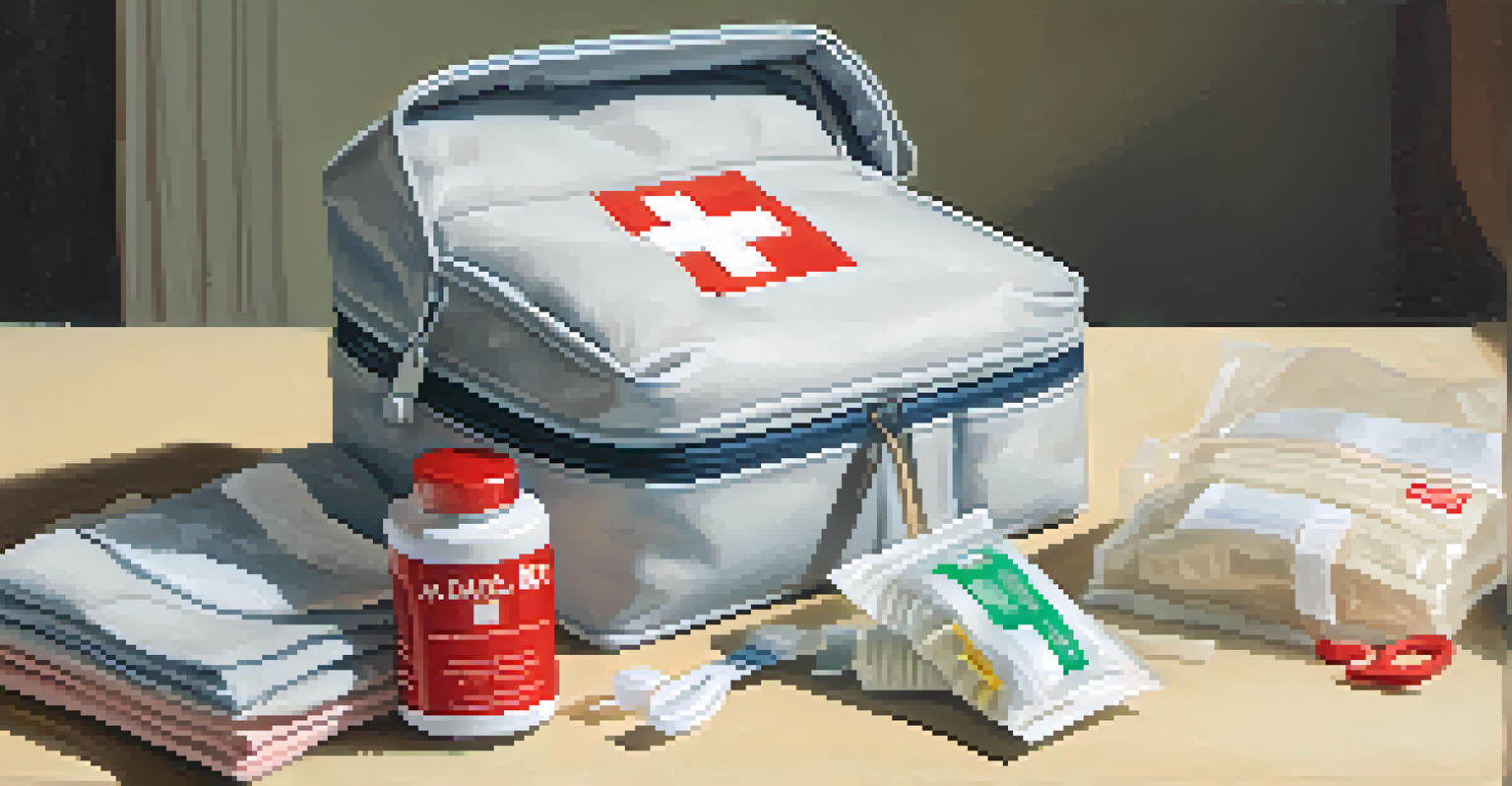Emergency Procedures for Carving Injuries: A Quick Guide

Understanding Carving Injuries and Their Risks
Carving injuries generally occur when a sharp object accidentally cuts the skin. These injuries can happen while preparing food, crafting, or during other activities involving knives or blades. Understanding the nature of these injuries is crucial, as it helps in determining the seriousness and the immediate steps to take.
An ounce of prevention is worth a pound of cure.
Injuries can range from minor cuts that might only need a bandage to deep lacerations that require medical attention. The risk of infection is also a significant concern, especially if the object is not clean. Recognizing the severity of the wound early on can help prevent complications later.
Keeping calm is essential when dealing with carving injuries. Panic can cloud your judgment and slow down your response time. By understanding the risks and potential outcomes of these injuries, you'll be better equipped to handle them effectively.
Assessing the Severity of the Injury
The first step in responding to a carving injury is to assess its severity. Look for signs such as depth of the cut, bleeding intensity, and whether the injury is located near vital areas like joints or arteries. A quick evaluation can guide your next course of action.

If the cut is shallow and minor, it may only need cleaning and a bandage. However, if the bleeding is profuse or the cut is deep, it’s time to seek medical help. Knowing when to act can make a significant difference in recovery time and preventing further complications.
Assess Injury Severity Quickly
Recognizing the severity of carving injuries early on can guide effective treatment and prevent complications.
In cases of uncertainty, err on the side of caution. Even seemingly minor injuries can become serious if not treated properly. Remember, it's always better to get a professional opinion if you are unsure about the injury's severity.
Immediate First Aid Steps to Follow
Once you've assessed the injury, the next step is to apply immediate first aid. Start by washing your hands to prevent infection, then gently clean the wound with soap and water. Avoid using alcohol or hydrogen peroxide directly on the cut, as these can irritate the tissue.
The greatest weapon against stress is our ability to choose one thought over another.
After cleaning, apply gentle pressure with a clean cloth or bandage to stop any bleeding. Elevating the injured area can also help reduce blood flow to the wound. If bleeding doesn't stop after a few minutes, it’s essential to seek medical assistance immediately.
Finally, cover the wound with a sterile bandage to protect it from dirt and bacteria. Monitoring the injury for signs of infection, such as increased redness or swelling, is also crucial. Early intervention can prevent more serious complications.
When to Seek Professional Medical Help
Knowing when to seek professional help is just as important as providing first aid. If the injury is deep, or if you notice excessive bleeding that doesn't stop, it's time to contact a healthcare provider. Additionally, any injury that exposes underlying tissue warrants immediate medical attention.
If you can't move the affected area without pain, or if you see signs of infection, such as pus or increased warmth around the wound, don't hesitate to seek help. It's crucial to address these issues early to avoid further complications.
Follow First Aid Steps Promptly
Immediate first aid, including cleaning the wound and applying pressure, is essential for preventing infection.
Lastly, if the injury was caused by a dirty or rusty object, you may need a tetanus shot as a precaution. This is especially important for cuts that are deep or that show signs of infection.
Preventing Future Carving Injuries
Prevention is key when it comes to carving injuries. Always use the appropriate tools for the task, ensuring they are sharp and in good condition. Dull knives can slip and cause accidents, so maintaining your tools can help reduce the risk of injury.
Equally important is to focus on your workspace. Keep your area clean and organized to minimize distractions while carving. By ensuring you have enough space and that your tools are within reach, you can maintain your focus and reduce potential hazards.
Lastly, consider wearing protective gear, such as cut-resistant gloves, when engaging in activities that involve sharp objects. These simple precautions can go a long way in keeping you safe and preventing future injuries.
Caring for Wounds After Initial Treatment
After the initial treatment of a carving injury, paying attention to wound care is essential for proper healing. Keep the wound clean and dry, changing the dressing as needed to prevent infection. Regularly check for signs of infection, such as increased pain, swelling, or discharge.
If the injury has stitches, follow your doctor’s recommendations for care and when to return for a follow-up visit. Avoid submerging the wound in water until it has healed sufficiently, as this can increase the risk of infection.
Know When to Seek Medical Help
Understanding when to contact a healthcare provider can significantly impact recovery from serious carving injuries.
Additionally, maintain a healthy diet rich in vitamins and minerals to support healing. Foods high in protein, vitamin C, and zinc can significantly contribute to faster recovery and better skin repair.
Recognizing Signs of Infection Early
Being aware of the signs of infection is crucial in the recovery process. Common indicators include increased redness around the wound, swelling, warmth, and pain that worsens over time. If you notice any of these symptoms, it's important to consult a healthcare professional promptly.
Other signs to watch for include pus or other discharge from the wound, fever, or a general feeling of illness. These symptoms indicate that the body is fighting an infection, and timely medical intervention can help prevent serious complications.

Early recognition and treatment of infections can lead to quicker recovery and reduce the likelihood of long-term issues. Always trust your instincts; if something feels off, it's better to get checked out.